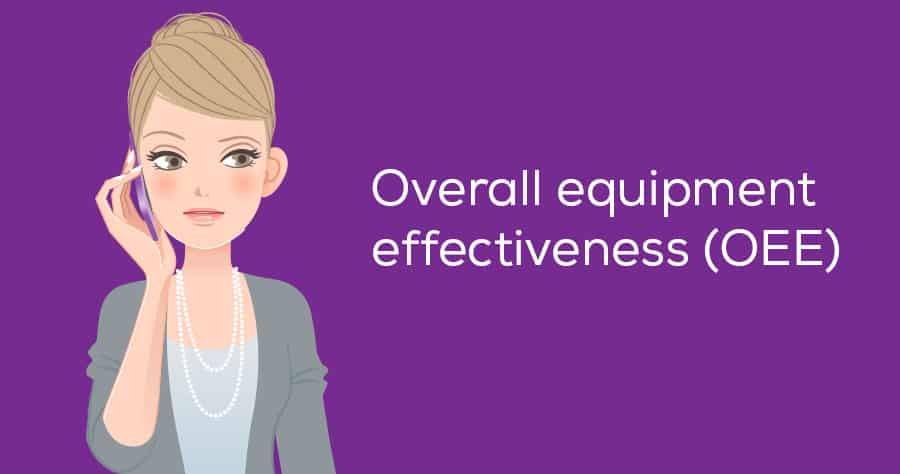Financial OEE: Manufacturing’s Real-time Income/Plant Performance Connection

Financial OEE allows leadership teams to discover exactly how much “hidden factory” exists while providing the ability to evaluate income from operations contributions in real-time and target specific improvements by manufacturing asset.
Manufacturing has seen many continuous improvement initiatives over the years. Lean, Six Sigma, Deming Cycle, and Hoshin Kanri, to name just a few, are all intended to help reach goals of improved quality and productivity. Many of these efforts have had mixed results for a number of cultural, tactical, business and technical reasons. They also leave the two most basic questions that the CxO or anyone in manufacturing management would like to know – “How well is / are my plant(s) running?” and “Am I making money?” – unanswered or floating in a sea of closely related metrics.
Manufacturing management needs a proven methodology to determine the profit dollar value of their decisions, connecting the plant floor to the income statement in real-time. Financial Overall Equipment Effectiveness (FOEE) can accurately quantify where a manufacturing company is making or losing money on a per part and per machine basis.
The foundation for Financial OEE starts with the metric Overall Equipment Effectiveness (OEE). OEE is defined as Availability multiplied by Quality multiplied by Performance. For example, world class OEE is 85% with each of the three factors being at 95%. While OEE is certainly an important metric, it tells management absolutely nothing about the financial side of manufacturing. There are tough questions that a manufacturing company’s Board of Directors might ask of senior plant management such as: “What are you doing, more importantly, what should you be doing to make more Income From Operations (IFO)? What is holding you back from reaching your best profit potential? Are you optimizing the use of your resources?”
Board members do not want to hear anecdotal stories, vague platitudes, or be presented with a sea of metrics that don’t clearly and cleanly reveal the bottom line. They deserve quantified specifics that tie production directly to financials. In other words, “How well is our plant running?” and “Are we making money?”
Let’s look at an example where the use of OEE by itself can paint a skewed picture. Imagine a plant manager who is presented with OEE for three separate pieces of manufacturing equipment manufacturing three separate products. Machine A has an OEE of 45%, B is 55% and C is 65%. The plant manager needs to decide the priorities where they will spend their time to determine what can be done to improve these OEE percentages.
The initial response might be, “well of course we do A first, then B and finally C – that is self evident.” But is it self evident? If the plant manager’s goal is to maximize profit potential then the best way to do that would be to spend the time looking into which improvement alternative increases IFO the most. Taking C from 65% to 75% might generate more profit than taking A from 45% to 80% or B from 55% to world-class of 85%. The point is that if you don’t know the relationship of the financials to OEE, the ability to laser target where to start to maximize profit potential is non-existent.
The bridge across OEE to Financial OEE is constructed with a few key planks that can be visualized as connecting the specific details on what is happening on the shop, at the per part level, per machine or manufacturing asset basis, to your income statement.
On the shop floor side of the bridge are the following inputs into Financial OEE:
- Data generated by the Manufacturing Equipment and the Operator Input Panel
- A mechanism to get data off your manufacturing equipment such as MTConnect, FANUC FOCAS, OPC or any of a number of proprietary protocols and methods.
- Manufacturing Execution System (MES) or Manufacturing Operations Management System (MOMS)
The use of real-time shop floor data in the decision making process is taking hold thanks to shop floor connectivity standards such as MTConnect, the open, royalty-free standard that is intended to foster greater interoperability between manufacturing devices and software applications.
Manufacturing management and operators alike are using shop floor monitoring systems to track the making of parts to improve their equipment utilization. As plants and shops start to utilize real-time data to monitor their shop floors, the next logical question is: “What are the financial impacts of the decisions that occur on the manufacturing floor?” In order to answer that question, we need to build the other side of our Financial OEE bridge.
On the financial side of the bridge are the following inputs into Financial OEE:
- An ERP system that has financials broken down to the individual part and manufacturing asset level and associated job-costing data
- Product standards and product specific manufacturing data by product and by workstation
- A shop Application Programming Interface (API) that is used to speak bi-directionally with ERP systems and other data silos
One of the key challenges for all manufacturing management teams is that the income statement is traditionally not constructed in real time. There are many ERP systems being used today in shops and plants. The ability to speak to these systems in real time in a bi-directional fashion is critical to the success of Financial OEE. Too often we see silos of financial (and other) information where individuals are rekeying information in from one system into another. This flawed approach introduces vulnerability for human error, but worse, it is the exact opposite of real time.
A key benefit of a Financial OEE system is the number and types of adapters it provides to link all critical production and financial information in real time. For example, we define a shop API as a general-purpose adapter that can be easily modified to talk to everything from a CSV file to a database. The shop API can be thought of as the adapter that can merge the silos between the shop floor and your top floor financial data.
Financial OEE is defined as the ratio of current profits or Income From Operations (IFO) at current OEE relative to theoretical profits at world class OEE. What this means is that the plant is not being compared to a plant on the other side of town, but to itself running at world-class performance. The true benefits from Financial OEE come when questions such as the following are asked, and ultimately answered by a thorough understanding of this key FOEE relationship.
- What continuous improvement path or roadmap should I take to improve my performance to maximize profits?
- Where in the manufacturing operation should I start?
- What specific activities make the biggest impact to maximize profits?
- What is the ROI for effort expended?
Financial OEE gets the job done. Leadership teams can see exactly how much “hidden factory” exists. Current profit will be more accurate and future profit projections based on projected volumes and upcoming product mixes will be much more realistic.
The ability to identify the true flow line constraint(s) as they relate to specific pieces of shop floor manufacturing equipment and the individual products they produce will be greatly improved. The ability to evaluate income from operations, contributions by manufacturing asset and target specific improvements by individual workstation for quality or speed or availability is now both possible, and can yield significant benefit across the plant and enterprise.
The challenges most plants run into when going down the path toward Financial OEE are in the areas of Management to Machine (M2M) connectivity to shop floor equipment, data availability and credibility, valid measures (auto-collected versus guessing, objective versus subjective), and unit and machine information for both OEE and financial data.
The ability to accurately capture production history in a historical repository by unit cost, and understanding Line of Business (LOB) operating expenses both by product and by workstation are the foundational precepts of Financial OEE. To overcome these challenges, the use of a ubiquitously connected Manufacturing Operations Management System coupled with a qualified consultant to assist in the adoption and execution of this process are both invaluable assets.
In summary, Financial OEE is about connecting the manufacturing floor to the base case income statement in real time, thereby enabling the “The Factory of the Future” today. The achievable goal is to link financial information with shop floor performance by actual product, process and machine data with quantitative visualizations of profits and losses. This moves companies from the disconnected to the connected manufacturing model. The benefits of this FOEE approach are vast, the path is known, and the ROI for effort expended is usually measured in mere months. In this case, time (to react) really is money (measured in greater profit potential).
Okay, let’s go.
In the meantime, please let me now your thoughts or interest in this topic. Do you agree with my views? Please share your views, comments or ideas below.
********************
By, David McPhail is President and CEO and Dave Edstrom is CTO of Memex Automation Inc.
I really appreciate that you are reading my post, I would also recommend these excellent articles.
- 5 Practical Ways You Really Can Turn That No Into Yes: High Sales Achievers
- Live Beyond Regret and Remorse
- When to Upgrade to an Enterprise CMS
- Beauty Queens Who Are Shaping The Financial Services Industry
- 14 Awesome Facts About Twitter That You Didn’t Know
- 12 Most Significant Differences Between A Boss And A Leader
- 22 Handy Twitter keyboard shortcuts
—————————–
For more columns, thoughts and opinions on “Management & Leadership in Business,” follow CEOWORLD magazine on Twitter @ceoworld.
Add CEOWORLD magazine to your Google News feed.
Follow CEOWORLD magazine headlines on: Google News, LinkedIn, Twitter, and Facebook.
This report/news/ranking/statistics has been prepared only for general guidance on matters of interest and does not constitute professional advice. You should not act upon the information contained in this publication without obtaining specific professional advice. No representation or warranty (express or implied) is given as to the accuracy or completeness of the information contained in this publication, and, to the extent permitted by law, CEOWORLD magazine does not accept or assume any liability, responsibility or duty of care for any consequences of you or anyone else acting, or refraining to act, in reliance on the information contained in this publication or for any decision based on it.
Copyright 2024 The CEOWORLD magazine. All rights reserved. This material (and any extract from it) must not be copied, redistributed or placed on any website, without CEOWORLD magazine' prior written consent. For media queries, please contact: info@ceoworld.biz
SUBSCRIBE NEWSLETTER








